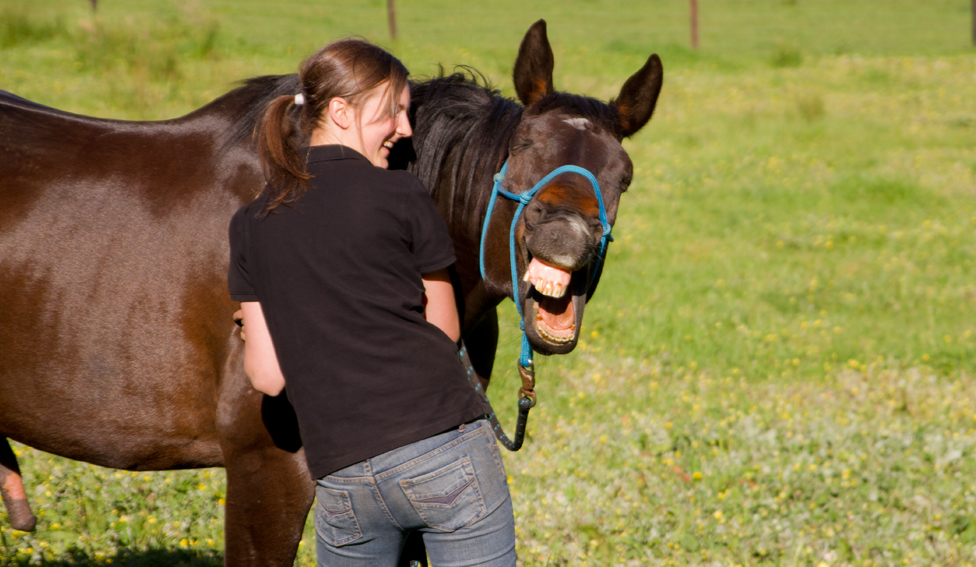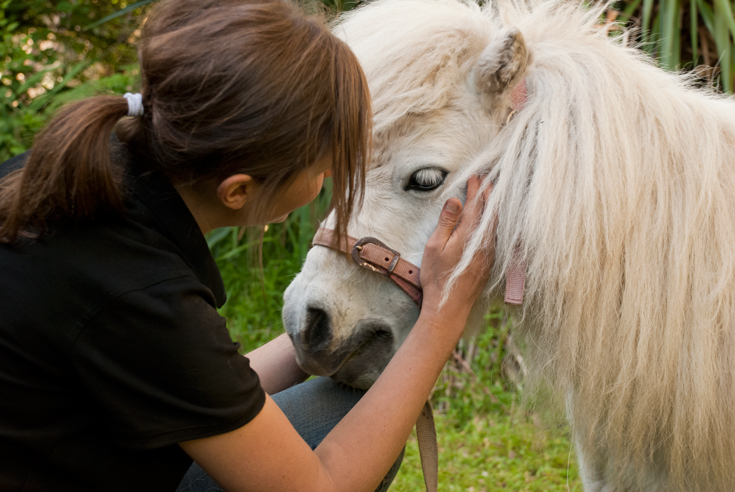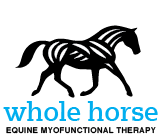
Equine Myofunctional Therapy, or horse massage, is a soft tissue therapy with remedial, maintenance, sports and therapeutic benefits. It treats the whole body via the musculo-skeletal system by increasing circulation and lymphatic drainage, stimulating nerves and trigger points and improving the myo-fascial relationship.
Massage can aid the ridden and driven horse to achieve increased length of stride, improve joint articulation, contact and willingness, retrain conditioned pain responses and even help resolve long-term issues such as girthiness. As a whole-body therapy it aids all systems to work together more efficiently for a happier horse and improved performance.
Will massage fix it?
Massage sets up the optimum conditions in the body for it to heal itself. In some cases this happens as quickly as in one session, in other cases it may take several. I like to treat the first session as an evaluation session and initial treatment, then work out a treatment plan.
If I (or you) feel that the horse is not improving within a specified number of sessions, I will recommend alternative routes that may be more helpful in addressing your particular problem or augment the massage protocol. I have a great network of equine health care professionals. If you do not have someone in the field you need, I may be able to point you in the right direction.
Getting a horse to peak health, especially if they are starting from a compromised state, is like lining up a combination lock. The numbers have to work together. Massage is only one number in the combination, and needs to be considered alongside diet, exercise, hoof trim, dental care, saddle fit, training (horse AND rider), veterinary and chiropractic care.
While regular sessions are the ideal, some clients prefer one-off treatments as their schedules allow, engaging my services on a 3-, 6- or 12-monthly basis for a check up, maintenance or preventative treatment.
Who benefits?
– Sport horses: pre- and post-competition massage is available. These horses are athletes and need to be treated as such!
– Old horses: these treatments focus on relaxation and warming techniques.
– Horses recovering from injury: massage increases circulation to healing areas and sets up the best conditions to help the body to heal itself. It is also a useful tool in assessing areas of secondary injury due to compensation.
– School horses that carry many different riders: massage can identify imbalances that pop up in these horses who need to adapt to lots of riders and relieve associated compensations and tightness.
– Rescued horses: massage can help to reeducate response to touch, build trust and identify and treat compromised areas in the body.
Any horse can benefit from massage as a preventative, remedial or relaxing treatment!

When not to massage
– malignant cancer
– infection
– raised temperature
– pregnancy
– skin conditions
– broken bones
– heart conditions
– nervous conditions.
On the day
Before the massage
Please ensure
– the horse is dry and clean (or at least not caked with mud!)
– the horse has had no drugs or medication (including worming pastes, bute, antibiotics etc.) in the 72 hours prior to treatment
– the horse is in a place where it is calm and happy (I don’t mind a walk!)
– the horse hasn’t been fed or exercised in the previous hour (grazing is fine)
– there is shelter from rain in inclement weather (massage can burn a horse through wet fur)
– the location is safe and non slippery.
The massage treatment
– I begin by getting a full case history of your horse and any particular concerns the owner has. The horse is observed moving and at rest, and a massage treatment is tailored to the individual (no two horses are the same, so no two treatments are the same!)
– Questions are encouraged throughout the treatment, and in some cases I try to get the client to feel what I’m feeling. If you haven’t learnt something by the time I’ve left, I haven’t done my job!
After the massage
– I generally recommend a horse is given 48-72 hours rest following a treatment. Take it easy! Remember, you can’t hurt anything by going too slow (please advise if you have a competition coming up in the following days and I will adjust the treatment to accommodate this, or we can reschedule for after the competition).
– Please DO NOT administer worming pastes, drugs or medications in the 12 hours following a massage.
– It is normal for horses to display lethargy or decreased appetite in the 24-48 hours following a treatment. If you are at all concerned, please don’t hesitate to call me!
– Please also consider that these symptoms may not be massage related. If in doubt please use your best judgement in seeking veterinary advice.
Any questions or concerns following a treatment? Give me a call any time!
